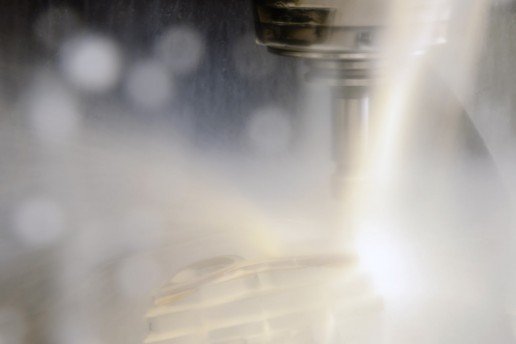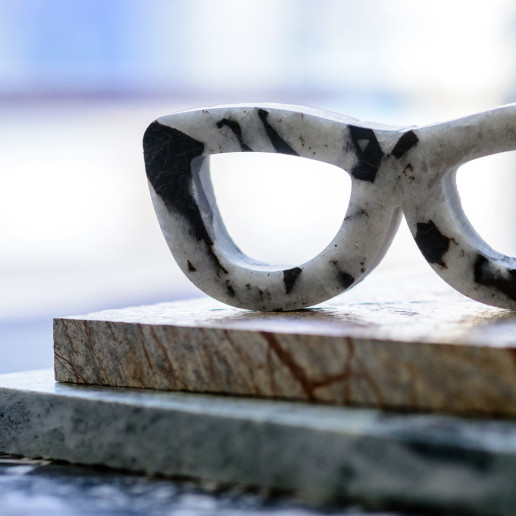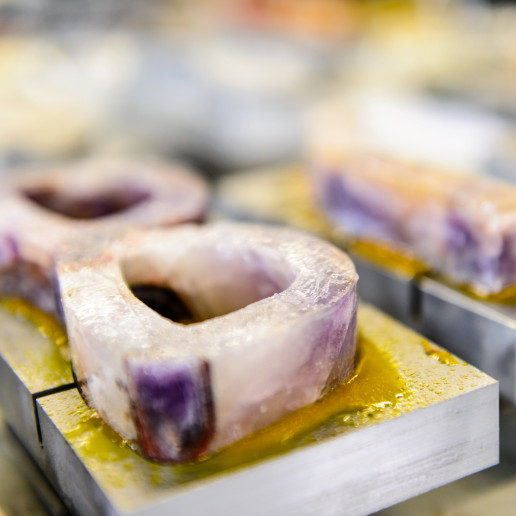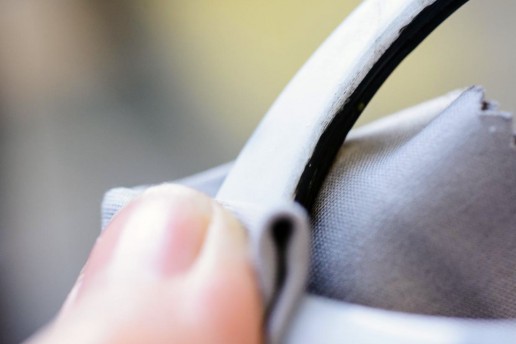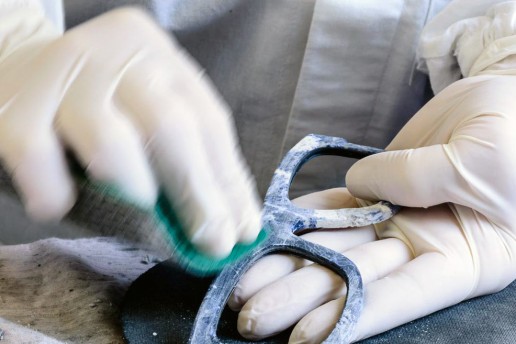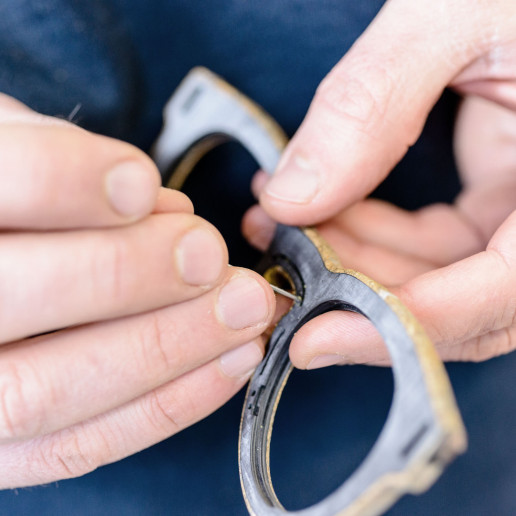
FROM MONOLITH TO SKIN OF MARBLE
SELECTION OF THE SLABS
It all starts with the careful selection of the stone slabs. We only use those without the slightest crack, break or surface imperfection. To create an ambitiously eye-catching frame, we choose slabs that even in small, thin cuts contain all the characteristics of a precious mineral: the expressive veins and textures much appreciated in larger surfaces.
MARBLE CUTTING BY WATER JET AND PROTECTIVE TREATMENT
After the first cutting of the plates by very high-pressure water jets, we proceed with a series of manual interventions to protect the marble in view of subsequent processing (for example, making sure to avoid breaking apart the material’s groove patterns). This is a slow process, done strictly by hand, that alternates between hot and cold phases to consolidate the stone material.
CARBON CUTTING AND SCULPTING OF THE STONE
And here we come to the heart of our technology. The slab, previously roughed out, is subjected to a first sculpting with high-technology machinery thanks to a digitally controlled mechanical micro-scalpel. We arrive at a perfect incision that only we can execute given our experience with microsurgery.
At this point, we proceed to the extremely delicate phase of bonding the sheet of carbon (by means of our special proprietary resin); a manual process that lasts a couple of days and includes progressive drying in three different ovens.
With the second phase of micro-metric sculpting the frame assumes its final shape. From a 2.0cm monolith we arrive at a sheet 0.8mm thick. The marble becomes a thin skin.
ACCESSORIES AND ASSEMBLY
In this phase, the glasses are uniquely made to order for the customer. Our metal inserts are produced in an artisanal manner from the very beginning, and we finish and brush them by hand then galvanize them in baths of yellow gold, rose gold, palladium and white gold. We use the same treatment for the nose pads. The final assembly is fully done by hand.
CERTIFICATION AND SAFETY
Ours are the only glasses made of marble in the world certified with the European Economic Area CE marking, having passed all 44 of the tests required by European legislation.


